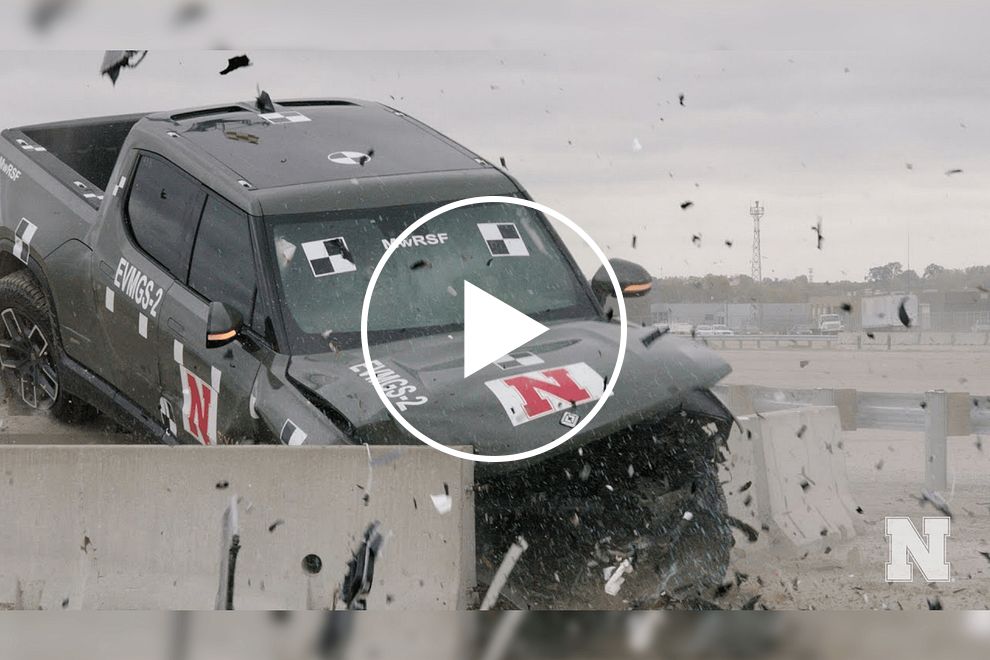
According to UNL, thousands of fatalities each year result from more than 100,000 run-off crashes involving traffic infrastructure like guardrails. “There is some urgency to address this issue,” said Cody Stolle, MwRSF’s assistant director. “As the percentage of EVs on the road increases, the proportion of run-off-road crashes involving EVs will increase as well.”
For the record, the guardrail was invented to lessen the severity of crashes. Its primary purpose is to deflect a vehicle away from a more hazardous environment behind it, like a sheer drop or a forest full of trees. It also helps to slow a car down. As you can see in the footage above, the Federal Highway Administration’s standardized guardrail failed to deflect the sheer force of an R1T traveling at 60 mph.
The guardrail in question was 12-gauge corrugated steel attached to six-inch deep steel posts, anchored by eight to 12-inch thick blackouts. They stand 31 inches tall and have no problem stopping a traditional truck like an ICE-powered Ford F-150.

